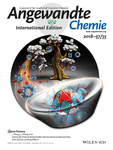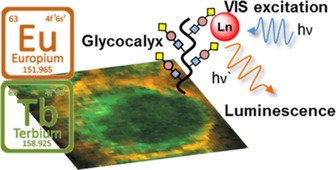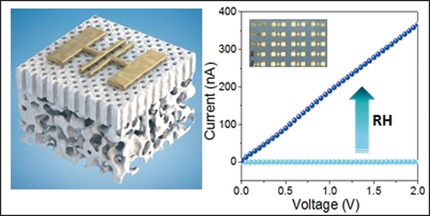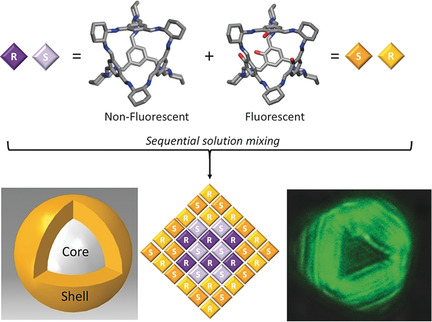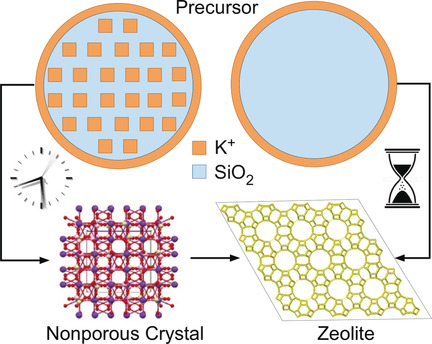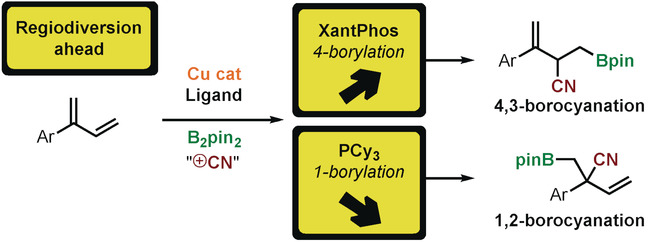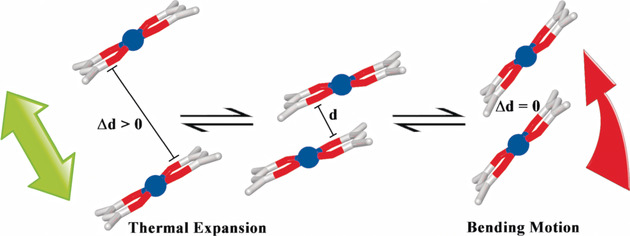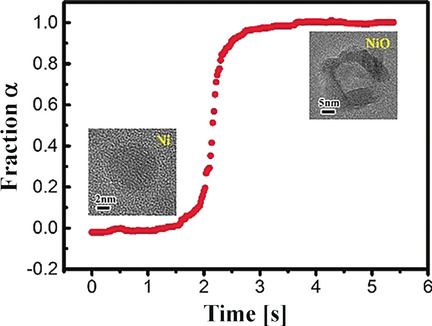Journal list menu
Export Citations
Download PDFs
Cover Pictures
Cover Picture: Atomically Precise Multimetallic Semiconductive Nanoclusters with Optical Limiting Effects (Angew. Chem. Int. Ed. 35/2018)
- Page: 11081
- First Published: 13 July 2018
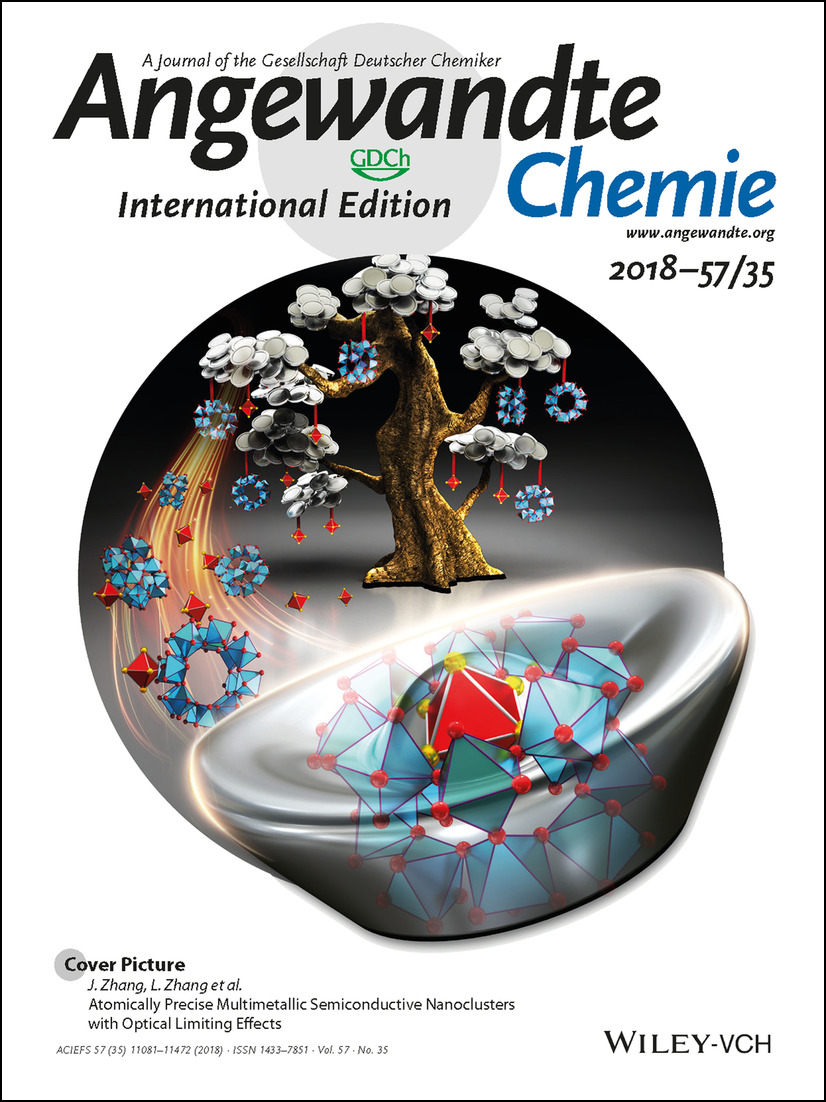
A multinuclear silver core can be stabilized in the cavity of a titanium-oxo cluster. In their Communication on page 11252 ff., L. Zhang, J. Zhang et al. report two such core–shell Ag6@Ti16-oxo nanoclusters, the structures of which may remind people of the traditional Chinese silver ingot currency ‘yuanbao′. The octahedral Ag6 clusters inside the semiconductive Ti–O shell display different orientations, which further influences their optical limiting effects towards 532 nm laser irradiation.
Inside Cover: Core–Shell Crystals of Porous Organic Cages (Angew. Chem. Int. Ed. 35/2018)
- Page: 11082
- First Published: 21 June 2018

Core–shell crystals of porous materials allow multiple functionalities to be used synergistically, for example, by choosing the core material for capacity and the shell for selectivity or surface properties. The few previous examples have all been based on frameworks, but in the Communication on page 11228, T. Hasell, A. I. Cooper et al. present the first report of core–shell crystals formed from porous molecules, in this case porous organic cages, which are directed by chiral recognition. Depicted are octahedral crystals with a fluorescent cage as the core, and a non-fluorescent cage shell layer growing on the surface.
Inside Back Cover: Organocatalyzed Domino [3+2] Cycloaddition/Payne-Type Rearrangement using Carbon Dioxide and Epoxy Alcohols (Angew. Chem. Int. Ed. 35/2018)
- Page: 11471
- First Published: 21 June 2018
![Inside Back Cover: Organocatalyzed Domino [3+2] Cycloaddition/Payne-Type Rearrangement using Carbon Dioxide and Epoxy Alcohols (Angew. Chem. Int. Ed. 35/2018) Volume 57 Issue 35, 2018](/cms/asset/c480177e-268e-4491-b410-0a661111d758/anie201806878-toc-0001-m.jpg)
An organocatalytic domino process was developed towards elusive heterocyclic compounds that is based on the use of carbon dioxide and epoxy alcohols as reagents. In their Communication on page 11203 ff., A. W. Kleij and co-workers report a process reminiscent of the well-known Payne rearrangement of epoxides. Highly substituted epoxy alcohols first undergo substrate-controlled CO2 activation, thereby forming a cyclic carbonate; this is followed by in situ base-mediated carbonate isomerization and trapping of the desired product.
Back Cover: A Long Cycle Life, Self-Healing Zinc–Iodine Flow Battery with High Power Density (Angew. Chem. Int. Ed. 35/2018)
- Page: 11472
- First Published: 06 July 2018
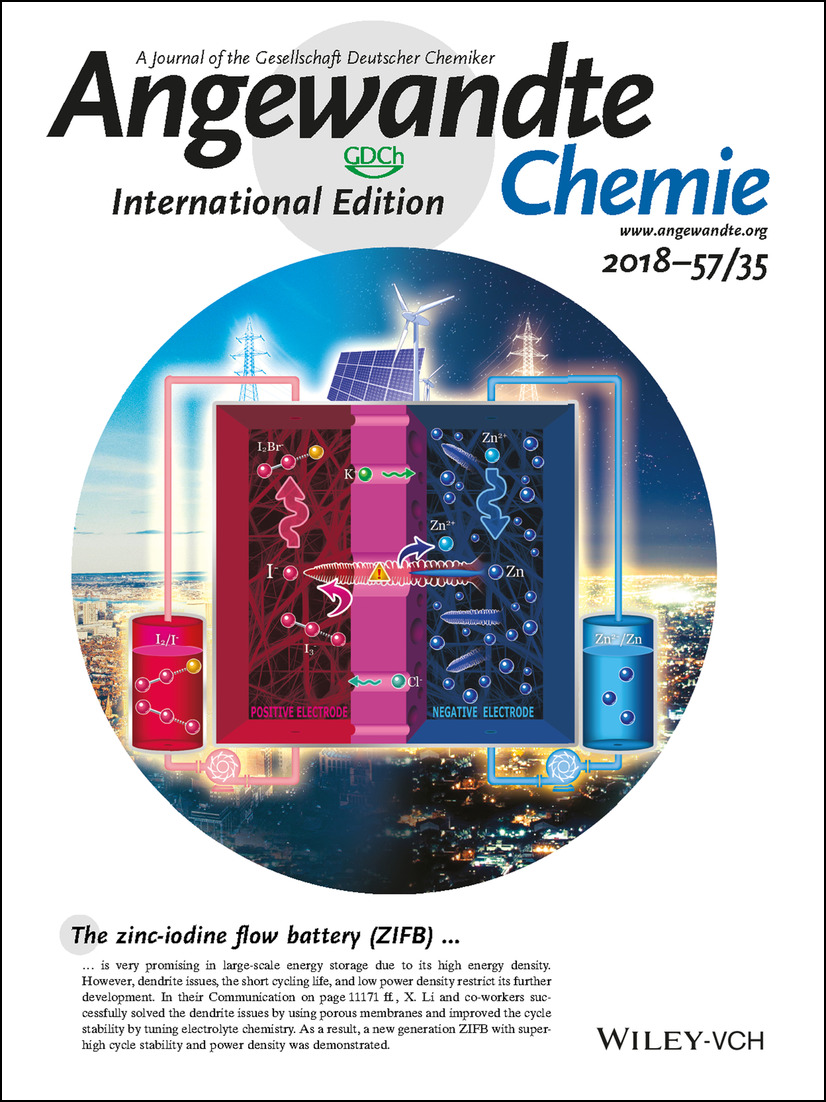
The zinc-iodine flow battery (ZIFB) is very promising in large-scale energy storage due to its high energy density. However, dendrite issues, the short cycling life, and low power density restrict its further development. In their Communication on page 11171 ff., X. Li and co-workers successfully solved the dendrite issues by using porous membranes and improved the cycle stability by tuning electrolyte chemistry. As a result, a new generation ZIFB with super-high cycle stability and power density was demonstrated.
Frontispiece
Frontispiece: In Situ Cyclization of Native Proteins: Structure-Based Design of a Bicyclic Enzyme
- First Published: 21 August 2018
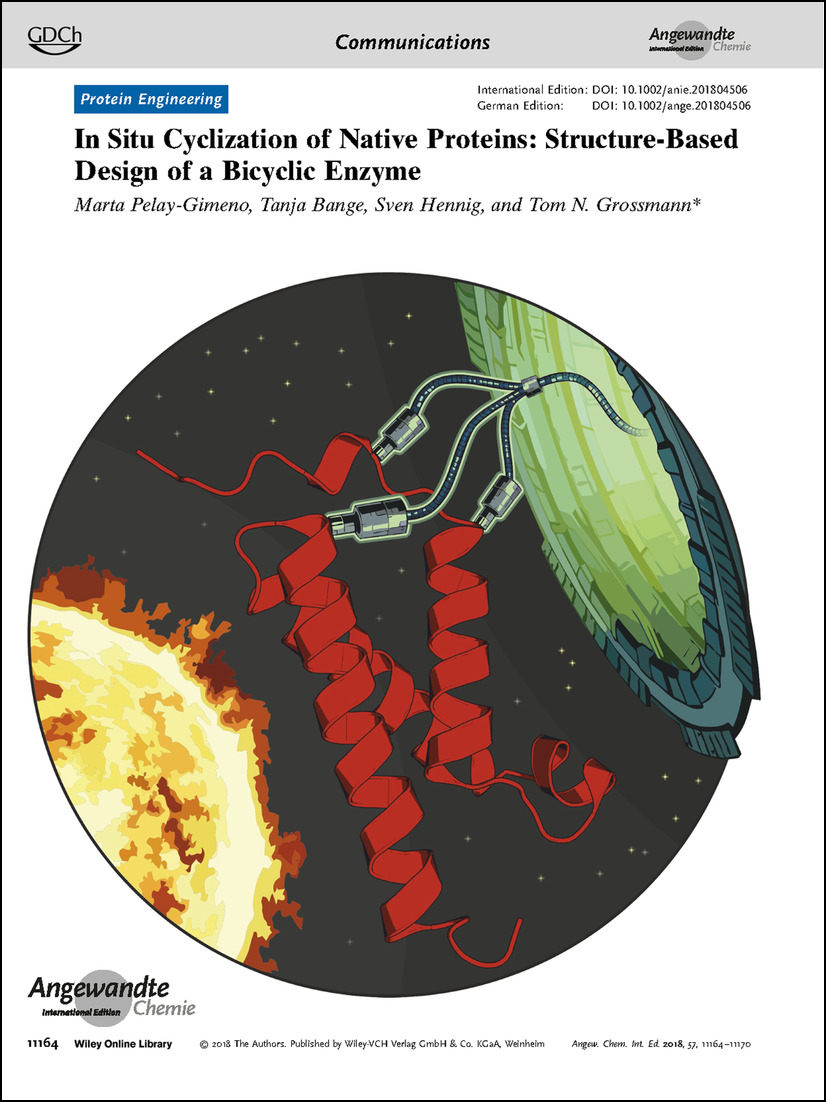
Protein Engineering. In their Communication on page 11164 ff., T. N. Grossmann et al. report on the generation of a bicyclic enzyme with a triselectrophilic linker, which leads to strongly increased stability towards thermal denaturation.
Graphical Abstract
Graphical Abstract: Angew. Chem. Int. Ed. 35/2018
- Pages: 11085-11102
- First Published: 21 August 2018
News
Spotlights on our sister journals: Angew. Chem. Int. Ed. 35/2018
- Pages: 11106-11110
- First Published: 21 August 2018
Author Profile
News
Camille Dreyfus Teacher-Scholar Awards: A. K. Boal, A. Chatterjee, D. E. Freedman, J. B. Matson, M. R. Seyedsayamdost, M. G. Shapiro / SCIEX Microscale Separations Innovations Medal and Award: A. E. Herr / ChemPubSocEurope Early Career Award: J. L. Zhang / EuroBIC Medal: G. Gasser
- Pages: 11113-11114
- First Published: 06 August 2018
Minireviews
Cross-Coupling
Iron-Catalyzed Cross-Couplings in the Synthesis of Pharmaceuticals: In Pursuit of Sustainability
- Pages: 11116-11128
- First Published: 19 February 2018

With an iron hand: Iron is one of the very few metals that have been successfully used as highly effective base-metal catalysts in practical, kilogram-scale industrial cross-couplings. The Minireview provides an introduction to the fundamental aspects of practical iron catalysis, highlights areas for improvement, and identifies new fields to be explored.
Water Splitting
Nano-Sized Inorganic Energy-Materials by the Low-Temperature Molecular Precursor Approach
- Pages: 11130-11139
- First Published: 07 May 2018

Materials birth: Over the last decade, there has been considerable progress in the synthesis of functional inorganic materials by using the low-temperature molecular precursor approach. This Minireview presents recent advances where this approach has enabled a facile access to high-performance catalysts for water-splitting.
Reviews
Magnetic Resonance Imaging
Parahydrogen-Based Hyperpolarization for Biomedicine
- Pages: 11140-11162
- First Published: 27 February 2018

Spin doctoring: Considerable progress has been made in the past decade in the area of parahydrogen-based hyperpolarization techniques for biomedical applications. This Review provides a selective overview of these developments, covering the areas of spin physics, catalysis, instrumentation, preparation of the contrast agent, and applications.
Communications
Protein Engineering
In Situ Cyclization of Native Proteins: Structure-Based Design of a Bicyclic Enzyme
- Pages: 11164-11170
- First Published: 30 May 2018
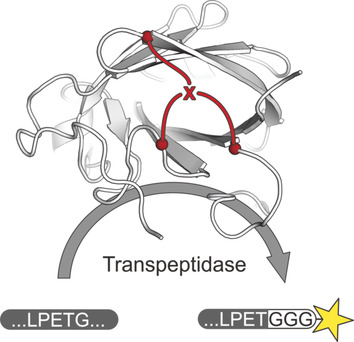
Bicyclic enzymes: An approach that enables cyclization through the installation of modular crosslinks into native proteins composed entirely of proteinogenic amino acids is reported. Three surface-exposed cysteine residues are introduced, which are then reacted with a triselectrophile to generate a bicyclic enzyme with strongly increased stability towards thermal and chemical denaturation.
Zinc–Iodine Flow Batteries | Very Important Paper
A Long Cycle Life, Self-Healing Zinc–Iodine Flow Battery with High Power Density
- Pages: 11171-11176
- First Published: 01 May 2018
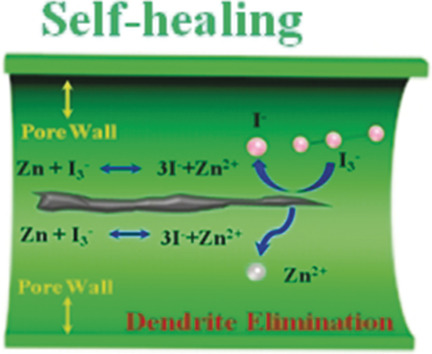
I heal: A zinc–iodine flow battery was prepared using highly soluble KI and ZnBr2 as the redox reactants to avoid the precipitation of the catholyte and anolyte. Employing a low-cost porous polyolefin membrane can effectively eliminate the accumulation of zinc dendrites and the membrane can even heal itself after micro-short-circuiting as a result of overcharging.
Carbon Materials
Hydrophobic-Force-Driven Removal of Organic Compounds from Water by Reduced Graphene Oxides Generated in Agarose Hydrogels
- Pages: 11177-11181
- First Published: 02 July 2018
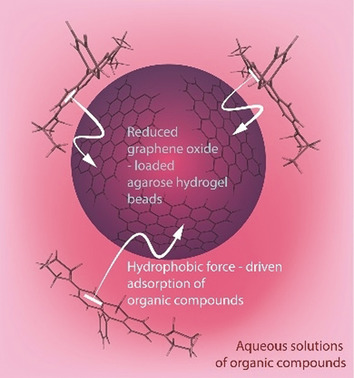
Driving out contaminants: Hydrophobic reduced graphene oxides (rGOs) are introduced into agarose hydrogel beads to effectively remove various organic compounds from water through adsorption driven by the hydrophobic attraction. The removal efficiency of organic compounds noticeably depends on their solubility in water and considerably increases with salinity in aqueous media.
Tissue Engineering
Photocontrolled Multidirectional Differentiation of Mesenchymal Stem Cells on an Upconversion Substrate
- Pages: 11182-11187
- First Published: 23 July 2018

Leading light: An upconversion-based substrate was designed and constructed for photocontrolled multidirectional differentiation of mesenchymal stem cells (MSCs). The detachment of 4-(hydroxymethyl)-3-nitrobenzoic acid modified poly(ethylene glycol) moieties on the substrate can be adjusted by near-infrared (NIR) irradiation, which dynamically changes cell–matrix interactions and induces adipogenic or osteogenic differentiation of the MSCs.
Peptide Hydrogels
Enzymatic Control of the Conformational Landscape of Self-Assembling Peptides
- Pages: 11188-11192
- First Published: 03 July 2018

It's under control: Post-translational modification is a common mechanism to control protein conformation and regulate function. This principle was expanded to control the formation of supramolecular assemblies by altering the conformational bias of self-assembling peptides through dephosphorylation.
Asymmetric Catalysis
Synthesis of β-Substituted γ-Aminobutyric Acid Derivatives through Enantioselective Photoredox Catalysis
- Pages: 11193-11197
- First Published: 30 April 2018
Drug Delivery
Directed Graphene-Based Nanoplatforms for Hyperthermia: Overcoming Multiple Drug Resistance
- Pages: 11198-11202
- First Published: 15 June 2018
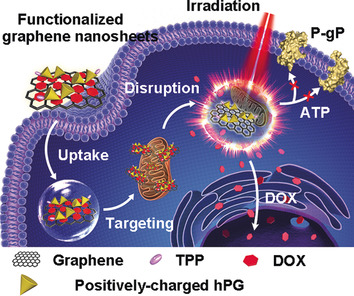
Multiple functionalized graphene nanosheets accumulate in mitochondria after cellular uptake, disrupting mitochondrial function upon laser irradiation and resulting in more of the released Doxorubicin (DOX) being delivered into the nucleus. These multiple functionalized graphene sheets could overcome multidrug resistance and achieve effective synergistic tumor therapy. hPG=hyperbranched polyglycerol.
Organocatalysis
Organocatalyzed Domino [3+2] Cycloaddition/Payne-Type Rearrangement using Carbon Dioxide and Epoxy Alcohols
- Pages: 11203-11207
- First Published: 09 May 2018
![Organocatalyzed Domino [3+2] Cycloaddition/Payne-Type Rearrangement using Carbon Dioxide and Epoxy Alcohols](/cms/asset/7c8b31fe-b4c6-432c-9ae5-e658bdfc3145/anie201803967-toc-0001-m.jpg)
No Payne, no gain: A domino [3+2] cycloaddition/Payne-type rearrangement allows the synthesis of elusive heterocycles from carbon dioxide and epoxy alcohols. This attractive, metal-free, and operationally simple approach affords a wide range of highly substituted cyclic carbonates. The mechanistic manifold resembles that of the Payne rearrangement of epoxy alcohols, as shown by various control experiments.
Piezochemical Reaction
Ultrasound Promoted Step-Growth Polymerization and Polymer Crosslinking Via Copper Catalyzed Azide–Alkyne “Click” Reaction
- Pages: 11208-11212
- First Published: 10 July 2018
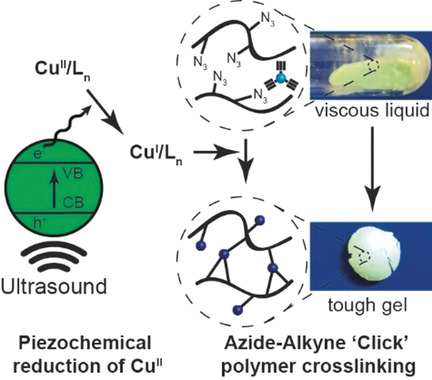
Mechano-Click polymerization: Mechanochemical polymerization using piezochemically driven copper catalyzed azide–alkyne “Click” reaction has been shown here. Ultrasonic activation of piezoelectric nanoparticles was used to generate a CuI catalyst to promote click polymerization and polymer crosslinking. Sonochemical polymerization will provide us with the tools to design polymeric materials that grow or become stronger with mechanical activation.
Perovskites
Pressure-Induced Emission Enhancement, Band-Gap Narrowing, and Metallization of Halide Perovskite Cs3Bi2I9
- Pages: 11213-11217
- First Published: 16 July 2018
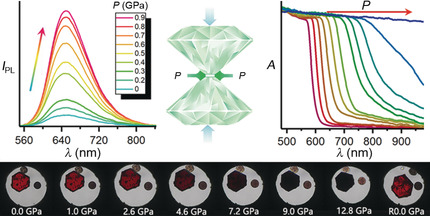
High pressure is used to modify the optical and electrical properties of zero-dimensional halide perovskite. The pressure response of Cs3Bi2I9 is significant under pressure along with phenomenal photoluminescence (PL) enhancement, band-gap narrowing, and metallization, promoting its photovoltaic applications by better materials-by-design.
Carbon Nanoubes
Embedding 1D Conducting Channels into 3D Isoporous Polymer Films for High-Performance Humidity Sensing
- Pages: 11218-11222
- First Published: 29 June 2018
Enzyme Catalysis
On-Line Polyketide Cyclization into Diverse Medium-Sized Lactones by a Specialized Ketosynthase Domain
- Pages: 11223-11227
- First Published: 13 June 2018
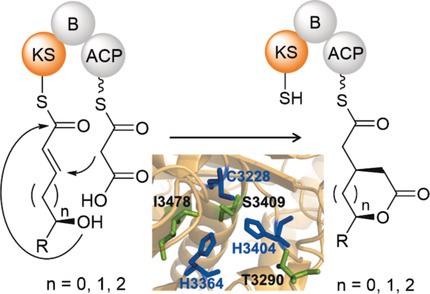
Stepping out of line: Site-specific mutagenesis and kinetic analysis of the versatile rhizoxin polyketide synthase (PKS) branching module identified critical conserved residues and showed that the ketosynthase (KS) domain promotes both Michael addition and lactonization. Moreover, the branching module tolerates substrates with varying acyl chain lengths to form various medium-sized lactones (see scheme).
Porous Crystals
Core–Shell Crystals of Porous Organic Cages
- Pages: 11228-11232
- First Published: 10 June 2018
Supramolecular Chemistry
Synthesis of Triply Fused Porphyrin-Nanographene Conjugates
- Pages: 11233-11237
- First Published: 08 July 2018
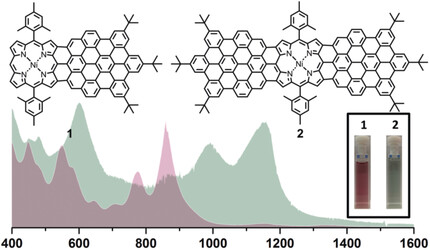
Triple whammy: Triply fused porphyrin-nanographene conjugates (1 and 2) have been synthesized by the Scholl reaction using tailor-made porphyrin based precursors. The conjugates show broad and intense near-infrared absorption. The self-assembled bilayer of 2 was observed at the trichlorobenzene/highly oriented pyrolytic graphite (HOPG) interface.
Oxidation
Photo-Electrochemical C−H Bond Activation of Cyclohexane Using a WO3 Photoanode and Visible Light
- Pages: 11238-11241
- First Published: 30 July 2018

Light and electricity: The photo-electrochemical C−H bond activation of cyclohexane to produce cyclohexanol and cyclohexanone (KA oil) with high partial oxidation selectivity (99 %) was achieved in air at room temperature and at atmospheric pressure. The production rate of KA oil was accelerated by applying a bias. The incident photon to current efficiencies at 365 and 420 nm were 57 % and 24 %, respectively.
Supramolecular Chemistry | Very Important Paper
Multiphase-Assembly of Siloxane Oligomers with Improved Mechanical Strength and Water-Enhanced Healing
- Pages: 11242-11246
- First Published: 11 July 2018

Well healed: A new type of supramolecular polymer with water-enhanced healing was prepared from a self-assembled oligomer network with multivalent hydrogen bonds assisted crystallization and multiphase separation. Reversible dissociation/association of the multivalent hydrogen bonds in the presence of water provides the mechanism of water-enhanced healing.
Electrochemical Catalysis
Control over Electrochemical Water Oxidation Catalysis by Preorganization of Molecular Ruthenium Catalysts in Self-Assembled Nanospheres
- Pages: 11247-11251
- First Published: 05 July 2018
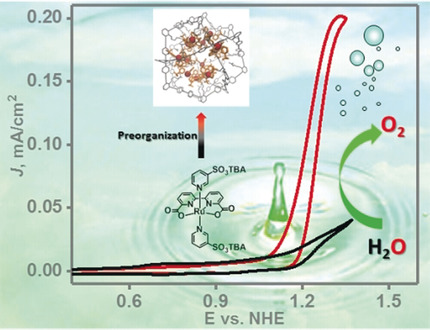
The water oxidation rate is enhanced by two orders of magnitude by preorganising Ru(bda)(PySO3TBA)2 catalysts to nanospheres, effectively eliminating diffusion limitations for the O−O coupling step at very low overall catalyst concentration. This preorganization strategy also provides new ways to study the reaction mechanism by varying the local catalyst concentration, while leaving the overall concentrations the same.
Cluster Compounds | Very Important Paper
Atomically Precise Multimetallic Semiconductive Nanoclusters with Optical Limiting Effects
- Pages: 11252-11256
- First Published: 14 May 2018
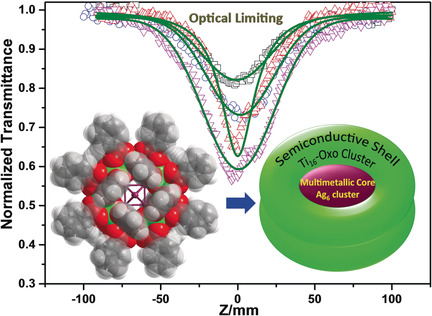
Silver core: Two Ag6@Ti16-oxo nanoclusters with atomic core–shell structures show optical limiting effects towards 532 nm laser. The differences between the two clusters lie in the orientation of the Ag6 cluster inside the semiconductive Ti−O shell. This orientation influences the optical properties of the nanoclusters.
Heterogeneous Catalysis | Very Important Paper
Probing Interfacial Electronic and Catalytic Properties on Well-Defined Surfaces by Using In Situ Raman Spectroscopy
- Pages: 11257-11261
- First Published: 11 July 2018
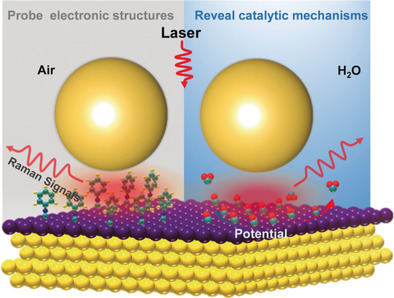
Shell seekers: Shell-isolated nanoparticle-enhanced Raman spectroscopy (SHINERS) was used to probe the electronic structures and reveal the catalytic mechanisms on Pd/Pt-overlayer-coated Au single crystals. This work opens up a novel way to detect the electronic structures of heterogeneous metal interfaces and understand catalytic mechanisms at the molecular level.
Single-Atom Catalysts
Ordered Porous Nitrogen-Doped Carbon Matrix with Atomically Dispersed Cobalt Sites as an Efficient Catalyst for Dehydrogenation and Transfer Hydrogenation of N-Heterocycles
- Pages: 11262-11266
- First Published: 06 July 2018
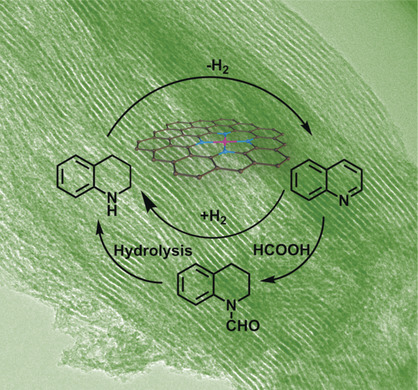
One stop shop: Isolated cobalt single-atom sites stabilized on an ordered porous nitrogen-doped carbon matrix are highly efficient catalysts for acceptorless dehydrogenation of N-heterocycles to release H2, and the reverse transfer hydrogenation (or hydrogenation) of N-heterocycles with a hydrogen source to store H2.
Electroluminescent Devices
A CuO Nanowire-Based Alternating Current Oxide Powder Electroluminescent Device with High Stability
- Pages: 11267-11272
- First Published: 30 July 2018
Nanoclusters
A Silver Nanocluster Containing Interstitial Sulfur and Unprecedented Chemical Bonds
- Pages: 11273-11277
- First Published: 16 July 2018
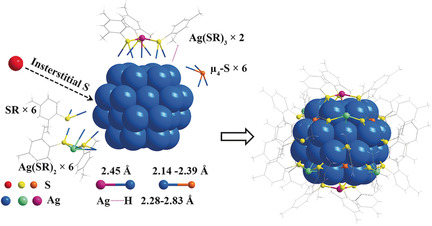
[Ag46S7(SPhMe2)24]NO3, a thiolated silver nanocluster, was synthesized and structurally resolved by X-ray analysis. Interstitial sulfur was found in the lattice void of Ag46 without lattice distortion or expansion; the classic theory of interstitial metal solid solutions might thus be not applicable at the quantum scale. Unprecedented chemical bonds and asymmetrically coordinated μ4-S were found and might be related to the interstitial sulfur.
Automation
A Fully Automated Continuous-Flow Platform for Fluorescence Quenching Studies and Stern–Volmer Analysis
- Pages: 11278-11282
- First Published: 10 July 2018
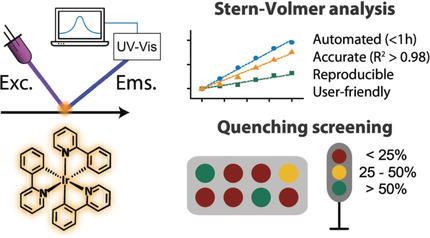
Rapid performance: The first fully automated continuous-flow platform for fluorescence quenching studies and Stern–Volmer analysis is described. Equipped with user-friendly software, the platform offers to any user the possibility to rapidly perform (<1 hour) these insightful analyses, thus accelerating reaction discovery. Compared to batch methods, an increase in the accuracy and reproducibility of the measured data was observed.
Zeolite Synthesis
Ultrasmall Zeolite L Crystals Prepared from Highly Interdispersed Alkali-Silicate Precursors
- Pages: 11283-11288
- First Published: 19 June 2018
Nanocatalysis
Geometrical Structure of the Gold–Iron(III) Oxide Interfacial Perimeter for CO Oxidation
- Pages: 11289-11293
- First Published: 04 July 2018
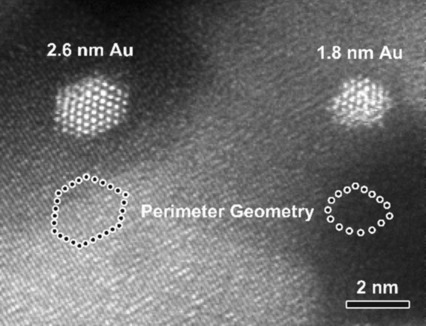
Interface geometry: Variations in the activity of Au/Fe2O3 catalysts for the CO oxidation, when increasing the size of the gold particles in the range of 2–5 nm, is intimately associated with the geometrical structure of the interfacial perimeter Au atoms. In smaller gold particles, the perimeter gold atoms have a low-coordinated environment and thus show a much higher intrinsic activity.
Metallofullerenes
Purification of Uranium-based Endohedral Metallofullerenes (EMFs) by Selective Supramolecular Encapsulation and Release
- Pages: 11294-11299
- First Published: 19 June 2018

In U go: Supramolecular nanocapsule 1⋅(BArF)8 is able to sequentially and selectively entrap the endohedral metallofullerenes U2@C80 and Sc2CU@C80, simply by soaking crystals of 1⋅(BArF)8 in a toluene solution of arc-produced soot. The endohedral metallofullerenes are easily released, giving highly pure fractions of U2@C80 and Sc2CU@C80 in one step.
Organic Photonics
2D Organic Photonics: An Asymmetric Optical Waveguide in Self-Assembled Halogen-Bonded Cocrystals
- Pages: 11300-11304
- First Published: 17 August 2018
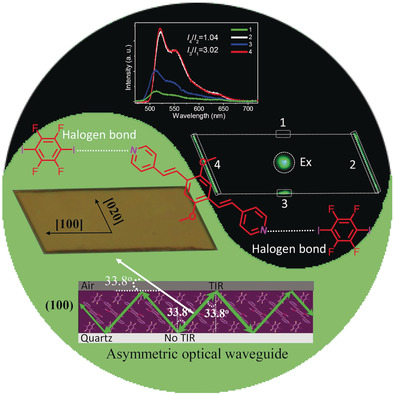
Guiding light: Through a bottom-up process, 2D halogen-bonded DPEpe-F4DIB cocrystals were fabricated that act as an asymmetric optical waveguide with the optical-loss coefficients of RBackward=0.0346 dB μm−1 and RForward=0.0894 dB μm−1 along the [010] crystal direction. This is further demonstrated in a microscale optical logic gate with multiple input/out channels.
Multicomponent Reaction
Regiodivergent Copper Catalyzed Borocyanation of 1,3-Dienes
- Pages: 11305-11309
- First Published: 10 July 2018
Supramolecular Chemistry | Hot Paper
Stack the Bowls: Tailoring the Electronic Structure of Corannulene-Integrated Crystalline Materials
- Pages: 11310-11315
- First Published: 05 July 2018

Supra-bowls: A π-bowl is ready to experience the outside world as it peers into the window of potential that could exist with its immobilization inside the scaffold. Corannulene integration resulted in the first examples of purely organic crystalline porous materials with tunable electronic profiles and four-orders-of-magnitude conductivity enhancement in comparison with the parent framework.
OLEDs | Hot Paper
Peripheral Amplification of Multi-Resonance Induced Thermally Activated Delayed Fluorescence for Highly Efficient OLEDs
- Pages: 11316-11320
- First Published: 04 July 2018
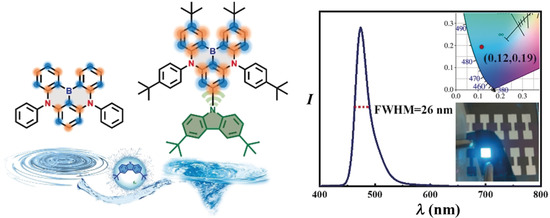
Strong enhancement of the multi-resonance effect in thermally activated delayed fluorescence species by a peripheral carbazole unit substitution was applied for a material with a photoluminescent quantum yield of up to 97.48 %. The maximum luminance exceeded 16 000 cd m−2 and the highest external quantum efficiency was up to 32.1 %.
Bowl-Shaped Molecules
Switching the Statistical C3/C1 Ratio in the Threefold Aromatic Substitution of Tribenzotriquinacenes towards the C3 Isomer
- Pages: 11321-11324
- First Published: 25 June 2018
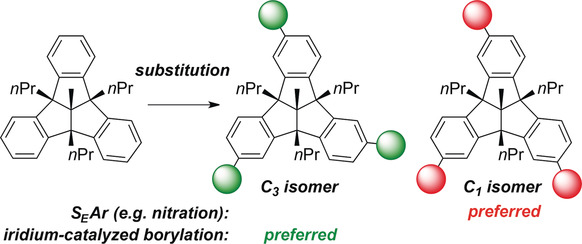
Three in one shot: Functionalized tribenzotriquinacenes (TBTQs), in particular those with C3 symmetry, are useful molecular building blocks. Electrophilic aromatic substitution of the parent TBTQ produces predominantly the C1 isomer (3:1 statistical C1/C3 ratio); however, the C3 isomer was obtained as the main product (C3/C1 2.6:1) by the triple borylation of TBTQ and shown to be a versatile precursor to other C3-symmetric TBTQs (see scheme).
Stimuli-Responsive Materials | Very Important Paper
Elastically Flexible Crystals have Disparate Mechanisms of Molecular Movement Induced by Strain and Heat
- Pages: 11325-11328
- First Published: 12 July 2018
Perovskites
Highly Emissive Self-Trapped Excitons in Fully Inorganic Zero-Dimensional Tin Halides
- Pages: 11329-11333
- First Published: 12 July 2018
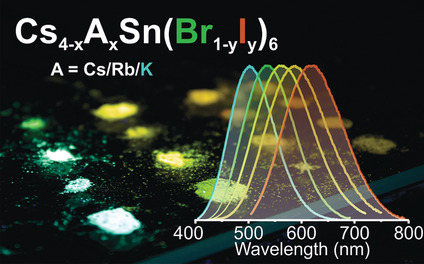
Fully inorganic, perovskite-derived zero-dimensional Cs4SnBr6 exhibits room-temperature broad-band photoluminescence from self-trapped excitons, centered at 540 nm with a quantum yield of 15±5 % (298 K; near 100 % at 200 K), and a large Stokes shift of ca.1.2 eV. A compositional series, Cs4−xAxSn(Br1−yIy)6 (A=Rb, K; x≤1, y≤1), was obtained wherein the emission peak ranges from 500 nm to 620 nm.
Protein Engineering
A Protein-Based Encapsulation System with Calcium-Controlled Cargo Loading and Detachment
- Pages: 11334-11338
- First Published: 05 July 2018

Captive, but free: An encapsulation system based on the hepatitis B virus capsid is described, in which an engineered high-affinity interaction between cargo and capsid proteins can be modulated by Ca2+. Cargo proteins are loaded into capsids in the presence of Ca2+, while ligand removal triggers unbinding inside the container.
Solventless Reaction
Mechanochemical Activation of Zinc and Application to Negishi Cross-Coupling
- Pages: 11339-11343
- First Published: 17 July 2018

Complement the synthetic toolkit: A form-independent activation of zinc, concomitant generation of organozinc species, and engagement in a Negishi cross-coupling reaction via mechanochemical methods is reported. The reported method exhibits a broad substrate scope for both C(sp3)–C(sp2) and C(sp2)–C(sp2) couplings.
Oxidation Kinetics
Fast Gas–Solid Reaction Kinetics of Nanoparticles Unveiled by Millisecond In Situ Electron Diffraction at Ambient Pressure
- Pages: 11344-11348
- First Published: 06 July 2018
Supramolecular Chemistry | Hot Paper
Surface-Assisted Self-Assembly of a Hydrogel by Proton Diffusion
- Pages: 11349-11353
- First Published: 12 July 2018
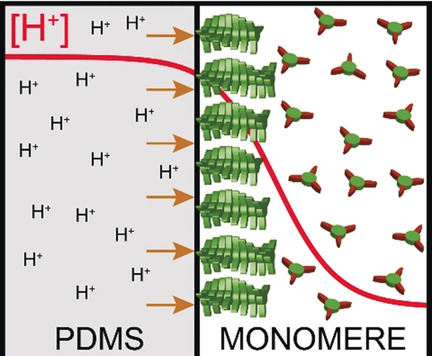
Hydrogel growing from a surface: A pH-responsive dendritic benzene-1,3,5-tricarboxamide peptide conjugate self-assembles into 1D supramolecular polymers at pH<5.6. The system was kinetically and mechanistically studied and modeled, and hydrogels were grown from solid–liquid interfaces driven by proton diffusion.
Amines
Iridium-Catalyzed Reductive Alkylations of Secondary Amides
- Pages: 11354-11358
- First Published: 06 July 2018
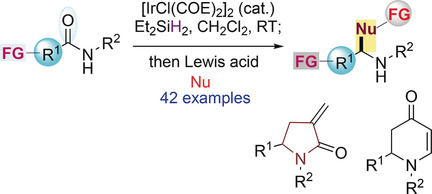
A soft touch: A versatile, direct, metal-catalyzed reductive functionalization reaction of secondary amides, to give functionalized amines and heterocycles, was developed. A broad substrate scope for both the amide and nucleophile was observed. Viable nucleophiles include reactive and soft C nucleophiles as well as a P nucleophile. The reaction exhibits good chemoselectivity and tolerates several sensitive functional groups (FGs).
Enzyme Discovery
A Mechanism-Based Approach to Screening Metagenomic Libraries for Discovery of Unconventional Glycosidases
- Pages: 11359-11364
- First Published: 12 July 2018
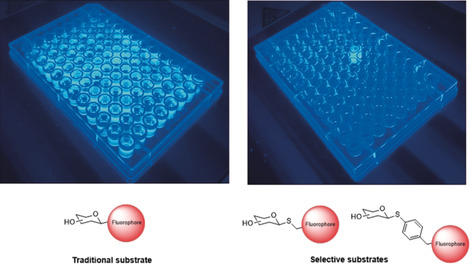
Finding a needle in a haystack: Novel selective substrates for high-throughput screening allowed the identification of rare, unconventional glycosidases from metagenomic DNA amongst a myriad of similar enzymes. Traditional substrates face a high back ground activity from these similar enzymes, which can mask the desired hits and/or lead to false positive hits.
Cyclizations
Gold(I)-Catalyzed Tandem Cycloisomerization of 1,5-Enyne Ethers by Hydride Transfer
- Pages: 11365-11368
- First Published: 10 July 2018

Shifty hydride: An unprecedented gold(I)-catalyzed tandem cycloisomerization of 1,5-enynes, initiated by 1,6-hydride transfer, was explored for the ready assembly of tricyclic skeletons. The reaction proceeds with the formation of two new carbon–carbon bonds and three rings by a single chemical operation in a stereospecific manner.
Reaction Mechanisms
HFIP-Assisted C−H Functionalization by Cp*CoIII: Access to Key Reactive Cobaltacycles and Implication in Catalysis
- Pages: 11369-11373
- First Published: 09 July 2018
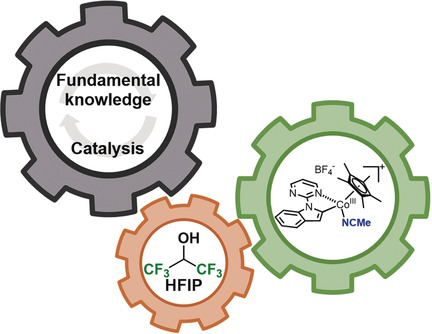
Shifting gears: Disclosed herein is efficient access to widely invoked cationic Cp*CoIII cobaltacycles, in C−H activation, by combining the stabilizing effect of MeCN with the presence of HFIP as an accelerating additive. This perfluorinated alcohol also exhibits a positive impact on mechanistically divergent alkyne hydroarylation and oxidative annulation processes under catalytic conditions.
Organocatalysis
Catalytic Enantioselective Synthesis of α-Chiral Azaheteroaryl Ethylamines by Asymmetric Protonation
- Pages: 11374-11377
- First Published: 29 June 2018

The direct enantioselective synthesis of chiral azaheteroaryl ethylamines from vinyl-substituted N-heterocycles and anilines is reported. A chiral phosphoric acid catalyst promotes dearomatizing aza-Michael addition to generate a prochiral exocyclic aryl enamine, which undergoes asymmetric protonation upon rearomatization, giving the products in high selectivity.
Microfluidic Devices | Hot Paper
A Self-Digitization Dielectrophoretic (SD-DEP) Chip for High-Efficiency Single-Cell Capture, On-Demand Compartmentalization, and Downstream Nucleic Acid Analysis
- Pages: 11378-11383
- First Published: 12 July 2018
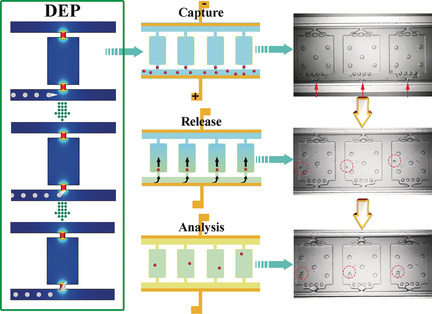
A self-digitization dielectrophoretic (SD-DEP) chip was designed by employing the traditional DEP and insulator DEP to create the local electric field for single-cell manipulation and downstream nucleic acid analysis. The multistep procedures of cell manipulation, lysis, and chemical analysis were performed in the integrated microdevice, consuming minimal reagents, minimizing contamination, and increasing assay sensitivity.
Nanodrugs
A Size-Reducible Nanodrug with an Aggregation-Enhanced Photodynamic Effect for Deep Chemo-Photodynamic Therapy
- Pages: 11384-11388
- First Published: 12 July 2018
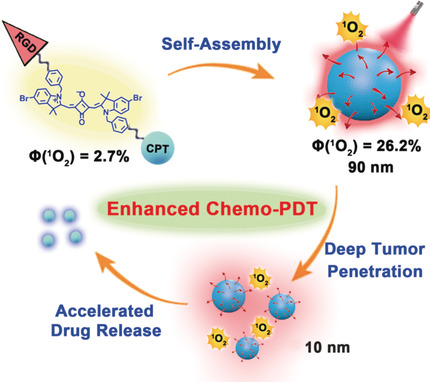
A size-reducible nanodrug with an enhanced photodynamic effect is constructed by self-assembly of a multifunctional indocyanine dye. Owing to the aggregation-enhanced photodynamic effect of the dye, the nanodrug exhibits a distinct singlet oxygen quantum yield. The generated singlet oxygen self-triggers the size reduction of the nanodrug, which facilitates deep tumor penetration of the nanodrug and accelerates chemodrug CPT release.
Flow Chemistry
Rapid and Mild Synthesis of Amino Acid N-Carboxy Anhydrides: Basic-to-Acidic Flash Switching in a Microflow Reactor
- Pages: 11389-11393
- First Published: 12 July 2018
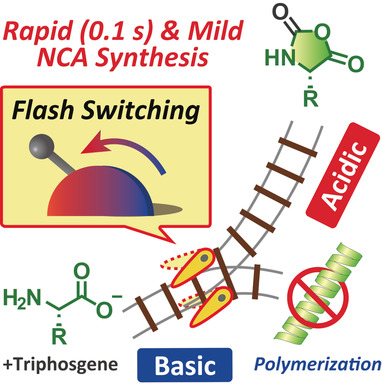
In a flash: Rapid (0.1 s) and mild (20 °C) synthesis of N-carboxy anhydrides (NCAs) using basic-to-acidic flash switching and subsequent flash dilution was demonstrated. This process enabled the synthesis of acid-labile NCAs, which are impossible to access using conventional batch conditions. The developed process requires simple phase separations and recrystallization to yield pure NCAs. This microflow approach could pave the way to on-demand, on-site NCA synthesis.
Natural Products
Single-Step Construction of the anti-Deoxypropionate Motif from Propylene: Formal Total Synthesis of the Cuticular Hydrocarbons Isolated from Antitrogus parvulus
- Pages: 11394-11398
- First Published: 28 June 2018

One giant leap: Reported here is the single-step construction of an anti-configured deoxypropionate motif by syndiospecific propylene oligomerization. This strategy was applied to the single-step preparation of rel-(2R,4S,6R,8S)-2,4,6,8-tetramethylundecan-1-ol, the racemic mixture of the synthetic fragment of the cuticular hydrocarbons isolated from the cane beetle Antitrogus parvulus.
Strained Molecules
2-Arylsilacyclobutane as a Latent Carbanion Reacting with CO2
- Pages: 11399-11403
- First Published: 18 July 2018

Captured! An electronically neutral 2-arylsilacyclobutane generates a nucleophilic carbanion at room temperature through cleavage of the benzylic C−Si bond when simply dissolved in a polar aprotic solvents such as N,N-dimethylformamide (DMF). The nucleophilic species is capable of capturing carbon dioxide to furnish a silalactone. The carboxylation reaction is unique in that no additional activating agents are required.
Origins of Life
Spontaneous Membrane Generation and Extension in a Dipeptide Single Crystal and Phospholipid Mixed System
- Pages: 11404-11407
- First Published: 15 July 2018
Asymmetric Catalysis
Direct Catalytic Asymmetric Vinylogous Additions of α,β- and β,γ-Butenolides to Polyfluorinated Alkynyl Ketimines
- Pages: 11408-11412
- First Published: 02 July 2018
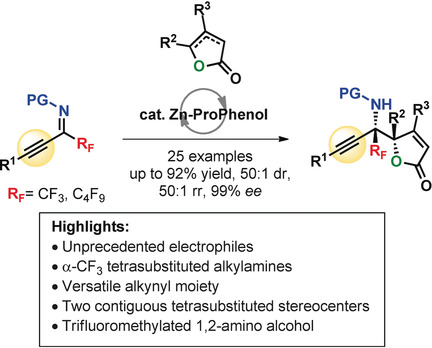
A Zn-ProPhenol catalyzed asymmetric Mannich reaction between butenolides and polyfluorinated alkynyl ketimines generates vinylogous products featuring two contiguous tetrasubstituted stereogenic centers. This is the first successful use of ketimines in the ProPhenol Mannich process, and the reaction can be performed on large scale with reduced catalyst loading.
Synthetic Methods
Iron(II)-Catalyzed Site-Selective Functionalization of Unactivated C(sp3)−H Bonds Guided by Alkoxyl Radicals
- Pages: 11413-11417
- First Published: 17 July 2018

Iron clad: An alkoxyl radical guided strategy for site-selective functionalization of unactivated methylene and methine C−H bonds, enabled by an FeII-catalyzed redox process, is described. The mild, expeditious, and modular protocol allows efficient remote aliphatic fluorination, chlorination, amination, and alkynylation of structurally and electronically varied primary, secondary, and tertiary hydroperoxides with excellent functional-group tolerance.
Strained Molecules
Strain-Induced Double Carbon–Carbon Bond Activations of Cycloparaphenylenes by a Platinum Complex: Application to the Synthesis of Cyclic Diketones
- Pages: 11418-11421
- First Published: 11 July 2018
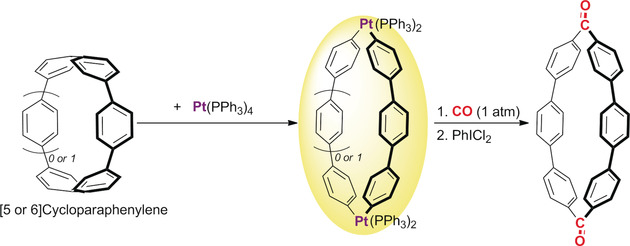
What a relief: The carbon–carbon bond activation of [n]cycloparaphenylenes ([n]CPPs) by a transition-metal complex is herein reported. The Pt0 complex Pt(PPh3)4 regioselectively cleaves two C−C σ bonds of [5]CPP and [6]CPP to give cyclic dinuclear platinum complexes in high yields. Theoretical calculations reveal that the relief of ring strain drives the reaction. The cyclic complex was further transformed into a cyclic diketone by a CO insertion reaction.
Homogeneous Catalysis
Synthesis of Bifunctional Allylic Compounds by Using Cyclopropenes as Functionalized Allyl Equivalents
- Pages: 11422-11426
- First Published: 03 July 2018

Synthesis of uncommon bifunctional allylic derivatives bearing a silane and an alcohol within the same allylic system is reported. The method relies on the use of hydrosilanes and adequately functionalized cyclopropenes, which deliver the allyl fragment via regioselective generation of a RhII vinyl carbene intermediate. The method shows a remarkably broad scope, including an intramolecular version for the synthesis of cyclic siloxanes or extension to allylic amines.
N-Arylation
Regiospecific N-Arylation of Aliphatic Amines under Mild and Metal-Free Reaction Conditions
- Pages: 11427-11431
- First Published: 29 June 2018

A pinch of salt: A metal-free N-arylation of primary and secondary amines with diaryliodonium salts has been developed. The methodology is unprecedented for metal-free reactions in terms of amine scope and the ability to transfer both electron-withdrawing and electron-donating aryl groups, and it tolerates steric bulk well.
Natural Product Synthesis
Total Synthesis of Keramamides A and L from a Common Precursor by Late-Stage Indole Synthesis and Configurational Revision
- Pages: 11432-11435
- First Published: 18 July 2018

The marine natural products keramamide A and L were synthesized for the first time by a convergent and flexible route. The installation of the substituted tryptophan moieties was accomplished at the very end of the synthesis on the cyclic peptides, and thus enabled the synthesis of both natural products from one common precursor.
C−C Coupling
Cobalt-Catalyzed Cross-Couplings between Alkenyl Acetates and Aryl or Alkenyl Zinc Pivalates
- Pages: 11436-11440
- First Published: 25 June 2018

Cobalt-catalyzed alkenylations: A range of functionalized aryl and alkenyl zinc pivalates underwent cobalt-catalyzed alkenylations with alkenyl acetates in good yields under remarkably mild reaction conditions at 23 °C. The efficient catalytic system tolerated various functional groups and enabled excellent stereoselectivities (Z/E<1:99).
Asymmetric Catalysis
Enantioselective Nazarov Cyclizations Catalyzed by an Axial Chiral C6F5-Substituted Boron Lewis Acid
- Pages: 11441-11444
- First Published: 06 July 2018
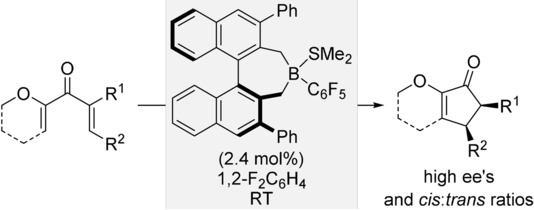
Boron with torque! A chiral variant of tris(pentafluorophenyl)borane [B(C6F5)3] promotes Lewis acid catalyzed Nazarov cyclizations of activated precursors with high enantiomeric excesses. The diastereoselectivity is also good, usually favoring the cis isomer in synthetically useful ratios. B(C6F5)3 catalyzes the ring closure of the same set of substrates in racemic fashion.
Mechanoresponsive Polymers
Triggered Metal Ion Release and Oxidation: Ferrocene as a Mechanophore in Polymers
- Pages: 11445-11450
- First Published: 13 June 2018
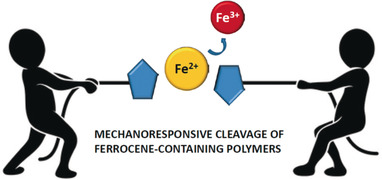
Stressed out: A new mechanophore, ferrocene, was embedded in polyurethane and poly(methyl acrylate). When these polymers are subjected to mechanical stress in solution (sonication), the chains break at the ferrocene units and iron ions are released into solution. The controlled release of iron ions from ferrocene is of interest for analytical and medical applications as well as for the catalysis of organic reactions.
Photocatalytic Hydrogen Production
Exploration into the Syntheses of Gallium- and Indiumborates under Extreme Conditions: M5B12O25(OH): Structure, Luminescence, and Surprising Photocatalytic Properties
- Pages: 11451-11455
- First Published: 10 July 2018

A jack of all trades: The new structure type M5B12O25(OH) is formed under extreme conditions of around 12 GPa and 1450 °C with either In3+ or Ga3+ as the metal ion M. It not only features an interesting structure with cuboctahedral BO4-tetrahedra cages and distorted metal-atom-centered octahedra, but shows also luminescence when doped with Eu3+ and unexpected high photocatalytic activity for hydrogen production when irradiated with UV light (when M=In).
Boron Cations
Boron(II) Cations: Interplay between Lewis-Pair-Acceptor and Electron-Donor Properties
- Pages: 11456-11459
- First Published: 04 July 2018

The boron rarity: boron(II) cations are rare and their chemistry largely unknown. Starting from a diborane with two easily exchangeable triflate substituents several new boron(II) cations are readily synthesized. For the first time the combined Lewis acidic and electron-donor properties of boron(II) cations could be used for the reduction of organic molecules
Electrocatalysis
Electrocatalytic Oxidation of 5-(Hydroxymethyl)furfural Using High-Surface-Area Nickel Boride
- Pages: 11460-11464
- First Published: 09 July 2018
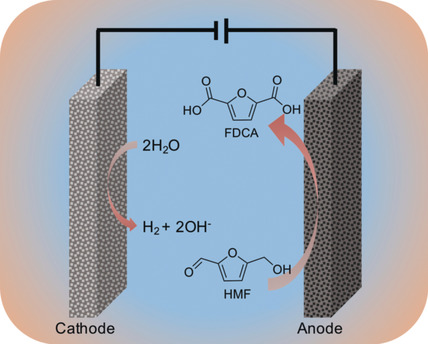
Adding value through electrocatalysis: The electrocatalytic oxidation of the biorefinery product 5-(hydroxymethyl)furfural (HMF) to the prospective platform chemical 2,5-furandicarboxylic acid (FDCA) over nickel boride (NixB) modified nickel foam in an electrochemical flow reactor proceeds with a very high FDCA yield of 98.5 % at a faradaic efficiency of 100 %. NixB appears to be a very promising catalyst for electrochemical HMF oxidation.
Self-Assembled Monolayers
Versatile Micropatterns of N-Heterocyclic Carbenes on Gold Surfaces: Increased Thermal and Pattern Stability with Enhanced Conductivity
- Pages: 11465-11469
- First Published: 28 June 2018

Reading the fine print: Patterned monolayers of N-heterocyclic carbenes (NHCs) on gold surfaces were obtained by microcontact printing of NHC–CO2 adducts and NHC(H)[HCO3] salts. The protocol enables facile access to versatile NHC-modified gold surfaces with highly stable patterns, enhanced conductivity, and the option for further modification.




